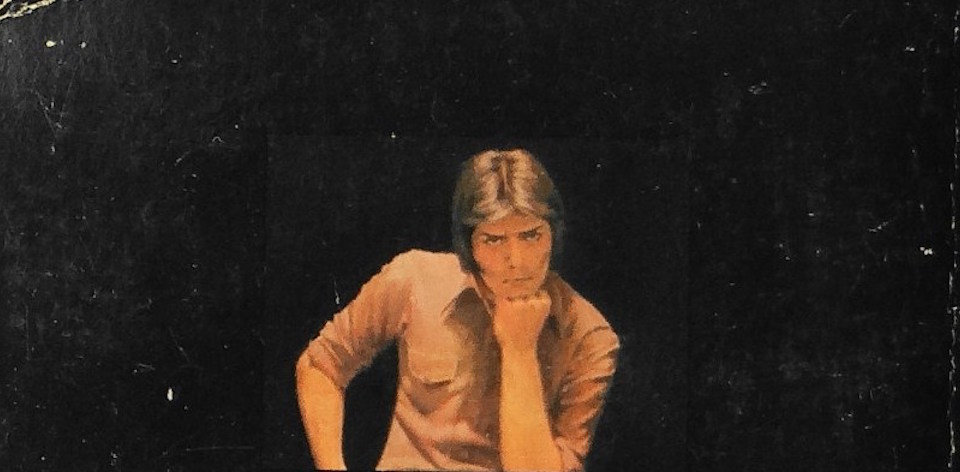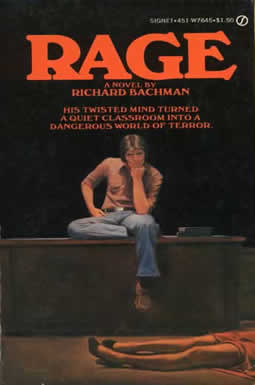Welcome to the feature column that explores a decent number of Stephen King’s books in the order they were published! (More or less)
Filling in the Stephen King gaps in publication order* requires a detour into the problematic RAGE, written under the less commercial title Getting It On and published as one of the ‘Richard Bachman’ pseudonym titles. Of the handful of books written pre- Carrie , it’s one of the few to reach the eyes of Constant Readers. Having since let it go out of print due to its connection with several school shootings, this novella has taken on a kind of mystique, but sometimes it’s best to let sleeping dogs lie.
The controversy around the book comes from its premise of a high school shooting. Outsider Charlie Decker finally takes the next step in his escalating cycle of domestic abuse and school pressure by turning a gun on several teachers and holding his class hostage. His only real opposition in the room is classmate Ted Jones, and the group is forced to choose sides between Charlie and Ted.
King is playing with themes that put it somewhere between Lord of the Flies and The Breakfast Club, with perhaps a few bits of Dog Day Afternoon for good measure. As the power dynamics shift within this closed environment, King crafts something of an impromptu therapy group. In this way, King/Bachman are preempting the modern psychology-aware works from the likes of Chuck Palahniuk, although it’s possible that King was aiming for Salinger’s Holden Caulfield here.
Stylistically, it’s one of the few books King has written in the first person. It’s an early indication of King’s often uncomfortable ability to get inside the head’s of his characters, whether they are positive actors or not. It was clearly still a time when King was trying to find his technique, as demonstrated by the “primary sources” that punctuated Carrie. As such, Charlie isn’t the most sympathetic of voices, even with the frequent flashbacks to his troubled home life or failed sexual encounters. At worst, it’s the pathetic whine of the mildly disaffected, which is kind of the point as well.
It doesn’t all fit together, but there remains a sly bit of satire lurking just underneath the surface. In the end, it’s probably a good thing that RAGE is no longer in active print. While I would never go as far to suggest that there is a causal connection between gun violence and fiction, here King doesn’t really offer much to the discourse. (That would wait until his 2013 essay, Guns). Which is a shame because we need some kind of group therapy session around mass shootings now more than ever.
On revisiting the book in 2015 after 25 years, writer Richard Chizmar – who would co-author Gwendy’s Button Box with King in 2017 – wrote “RAGE is not a great book; it’s a very good book, and I feel like I survived it, more than enjoyed it.” This is probably a kinder assessment than I would make of this early work, but King would seem to agree. It is no longer in print and the collection known as The Bachman Books excises it completely. Its protagonist may not be appealing to modern audiences, but it’s rarity certainly makes it attractive to collectors.
For the records: #TeamTed
*You may note that we’ve missed ‘Salem’s Lot in this process. These were kind of covered as part of an earlier reading project that covered The Dark Tower cycle.





